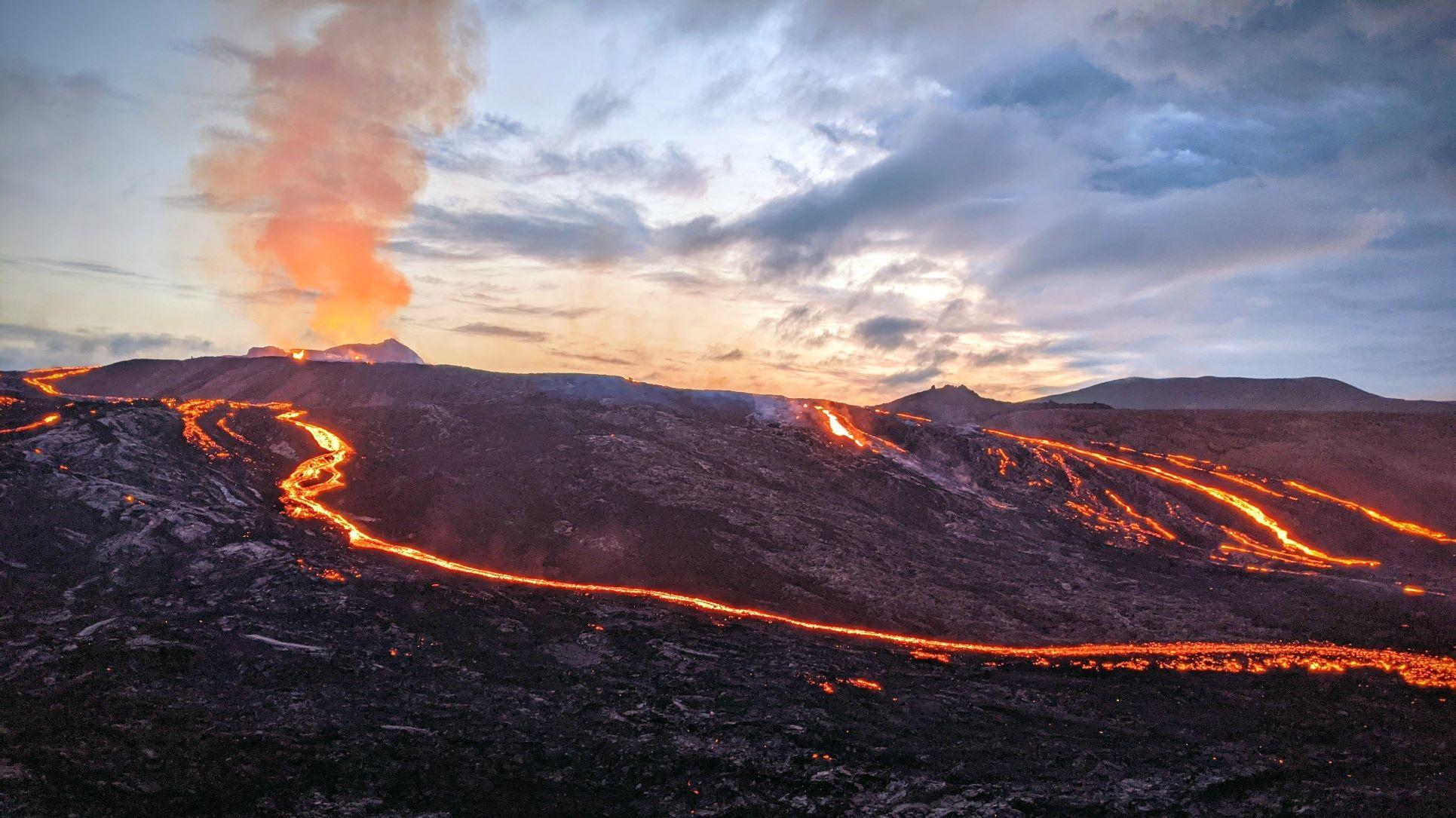
Submitted by Dr C.M. Martin-Jones on Thu, 26/05/2022 - 09:40
Tiny earthquakes, originating deep within Earth’s crust, could help scientists trace how magma moves beneath Iceland’s Reykjanes Peninsula — notable for its dramatic lava fountains of 2021 and continued unrest.
Cambridge Earth Science’s Tim Greenfield, who is presenting today at EGU, has analysed records of these barely-detectable earthquakes across the Peninsula since November 2019, using data collected in a collaboration with five other institutions including the University of Iceland. By tracking their location, the work is revealing the magma’s route to the surface, information which can be used to better predict when and where future eruptions might occur.
Scientists often use earthquakes as indicators of an eruption, with the number and size of tremors generally increasing before an eruption as magma moves upward. But these forecasts focus on larger surface shaking and tend to miss the smaller, harder-to-spot, earthquakes originating from deep beneath the roots of the volcano.
Greenfield is particularly interested in these deeper earthquakes because they come from a region of the crust which should be otherwise quiet. The rocks at these depths are warmer and more ductile — unlike the brittle, easily-ruptured rocks at the surface.
“There’s a lot of really important work going on to detect earthquakes on the surface in Iceland – but smaller earthquakes bubbling in the background can actually tell us a huge amount about the deep plumbing system feeding the volcanoes of the Reykjanes Peninsula” said Greenfield.
Greenfield, who compiled his deep earthquake dataset in collaboration with scientists from the Czech Academy of Sciences, notes that the first deep earthquakes started in March 2020, about three months after unrest was first detected in the area. These deep earthquakes lasted for at least another 18 months, pausing as a dyke, or sheet of magma, was injected into the crust and then restarting during the eruption; occurring in two swarms which correlate with changes in eruption style.
“The relationship between these deep earthquakes and what is happening at the surface suggests that they are related to the plumbing system,” said Greenfield.
Greenfield cautions that the exact cause of these earthquakes is still unknown, but the Cambridge Volcanology Group are currently exploring whether there could be some sort of barrier at depth causing a hold-up in supply of magma to the surface. He explains that, if the magma were held briefly at depth — perhaps by a pocket of stiffer rock — then some of its volatiles might exsolve, resulting in swarms of deep earthquakes. Greenfield now plans to collect more data to confirm the pattern coincides with the end of the eruption.
The 2021 eruption of Fagradalsfjall volcano, on the Reykjanes Peninsula, was unlike many others across the world because it built up momentum slowly, rather than starting with a big bang. Understanding its unusual behaviour is key for scientists trying to forecast eruptions. “There is certainly a lot of untapped information in deep long period earthquakes, which could be used by volcano observatories in forecasting eruptions across the world,” said Greenfield.
But according to Greenfield, the challenge is that each volcano is different, “What these deep earthquakes mean for an eruption depends on local context. At Mauna Kea, Hawaii, for instance, this type of earthquake has been common for decades, but there has never been an eruption in living memory.”
Greenfield now plans to work with Cambridge’s John Maclennan in an effort to link the timescale and patterns of deep earthquakes at Reykjanes with data on the magma’s journey stored within minerals - bringing us closer to understanding what makes volcanoes in this particular area tick.
Greenfield, T., Winder, T., Rawlinson, N., Southern, E., Bacon, C., Ágústsdóttir, T., White, R. S., Brandsdottir, B., Maclennan, J., Horalek, J., Gudnason, E. Á., and Hersir, G. P.: Deep seismicity preceding and during the 2021 Fagradalsfjall eruption, Reykjanes Peninsula, Iceland , EGU General Assembly 2022, Vienna, Austria, 23–27 May 2022, EGU22-5649, https://doi.org/10.5194/egusphere-egu22-5649, 2022.
